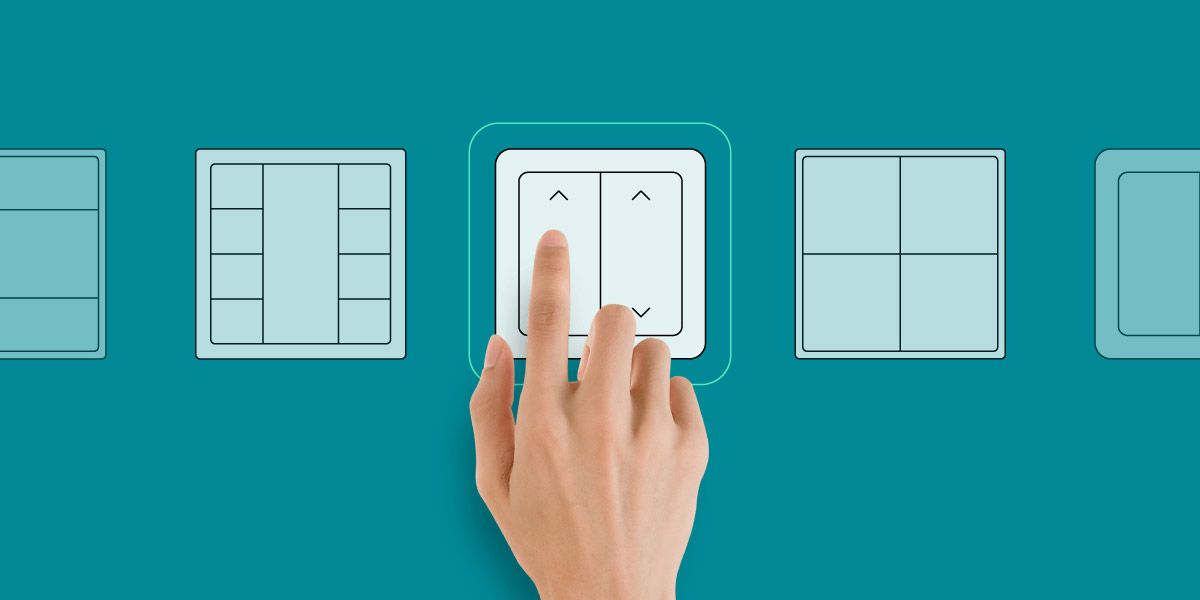
Introduction
Are you building a house or renovating an apartment and making it smart in the process? Or you are a smart home integrator working on residential projects? Then you have surely been contemplating what push buttons to choose for your projects and how to configure them - where to place them, how many scene buttons do you need, do you want to control audio with push buttons etc.
As anyone who went through this process knows, building a wired smart home can be quite demanding since there are many decisions the builder has to decide upon what kind of HVAC system & security system to choose, how to plan the lighting, what control options to include etc. Usually the builder has no prior knowledge about this (most of us will go through this process only once in our lives) and there is no real data to be found to guide them through these decisions.
This is why we are exploring various fields in smart homes (HVAC setup, lighting setup, security setup,...) that the homeowner needs to decide on when building their own smart home. And who knows better than the end users actually living with those setups? Or integrators actually implementing them.
We have therefore launched a campaign of surveys for smart home users & integrators, trying to find out what works best and what should be avoided. Our third survey was aimed at manual controls - despite the availability of remote control (via apps) & voice control still the most common way to control a smart home. (Figure 1) I have heard many integrators say that the user experience in a smart home is largely dependent on the chosen manual control principle and configuration.
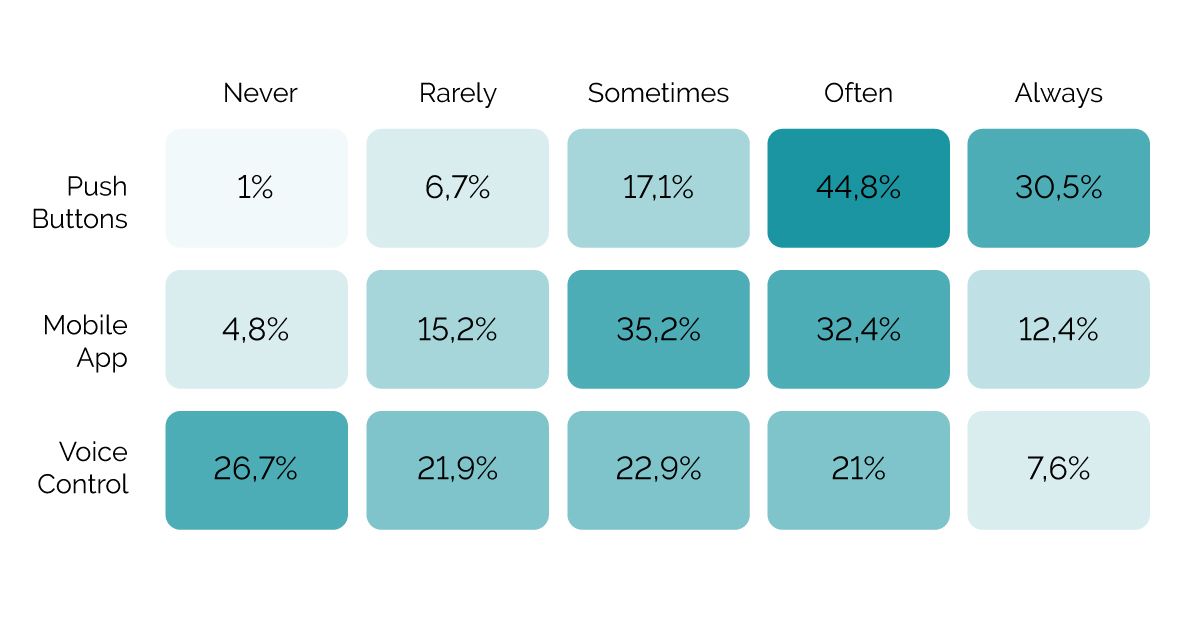
We have also been talking with Daniel Leitzbach of Cojacon GmbH, a Munich based smart building engineering company.
You can check it out here:
The user sample
Like in the Weather Station Survey we had different questions for end users and integrators. We have received close to 400 answers and consequently gained a lot of insight. Approximately three quarters of the participants were end-users and the rest were integrators.
And what did we find out? Keep reading to find out!!
Similarly to our previous surveys, 90 % of the end-user participants were owners of a wired smart home system, either KNX (67 %) or Loxone (27 %) (Figure 2).
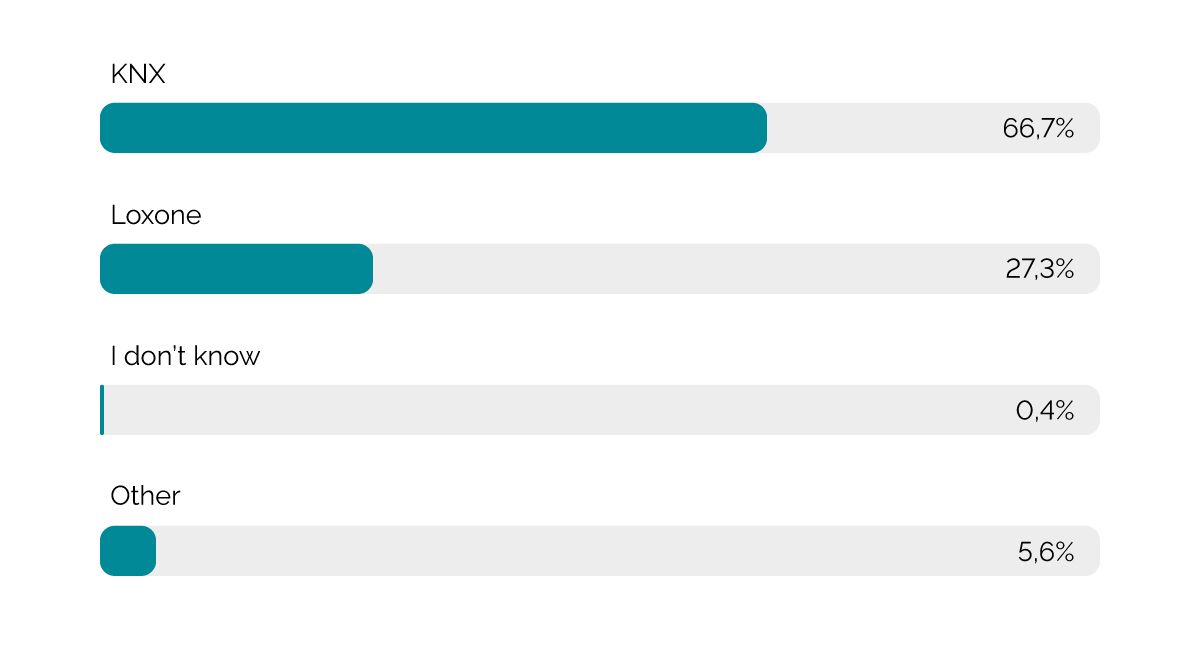
End-user survey
Our first question was related to what type of manual controls our participants have built into their homes (Figure 3). We were surprised to learn that multifunction/design push-buttons (such as Basalte Sentido for example) are almost as popular as push buttons and rocker switches with a more classical look (like Gira KNX Basic for example).

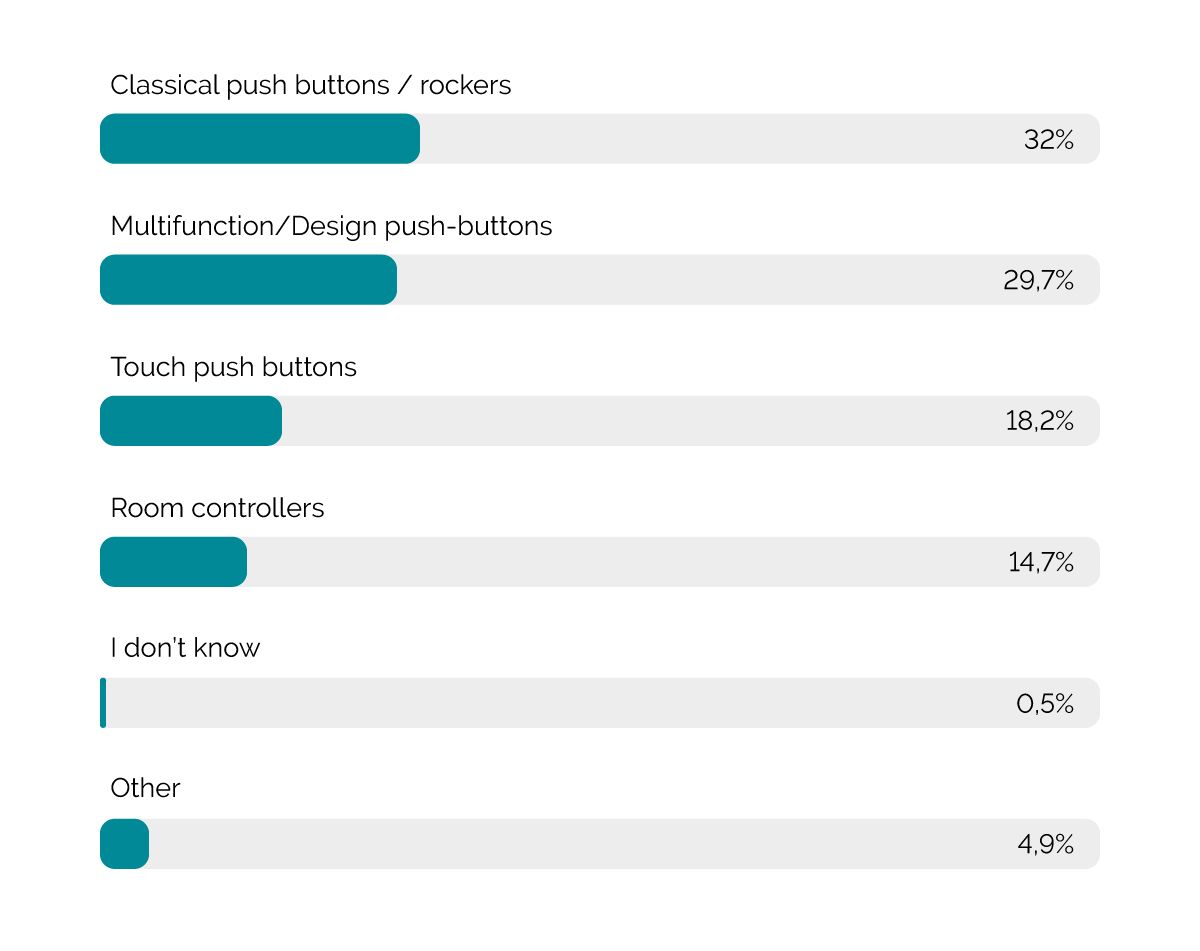
When asked how their manual controls were integrated with their smart home system, mostly (85 %) the answer was that the push-buttons are connected directly to the smart home field BUS. What surprised us here is the frequent use of wireless push buttons with little more than one fifth of all smart home users saying they have installed at least one wireless push button in their (mostly wired as seen previously) smart home equipped residence.
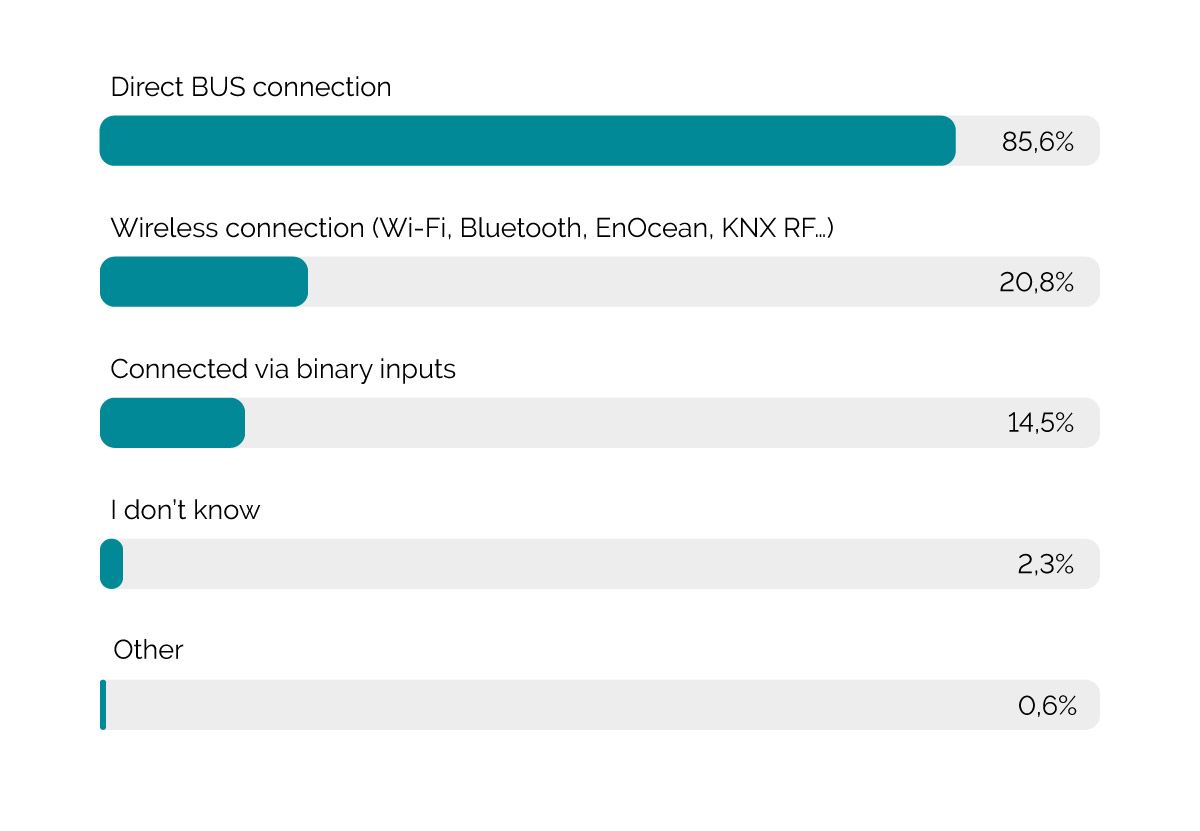
When asked about concrete brands, we see three clear leaders. More than a quarter of our participants chose to use manual control products from MDT - this was expected due to a good price/quality this company offers. The next third of survey respondents use either GIRA (20 %) or Jung (10 %) products. Of the 32 % of respondents who answered other, more than a half said they were using push buttons by Loxone.
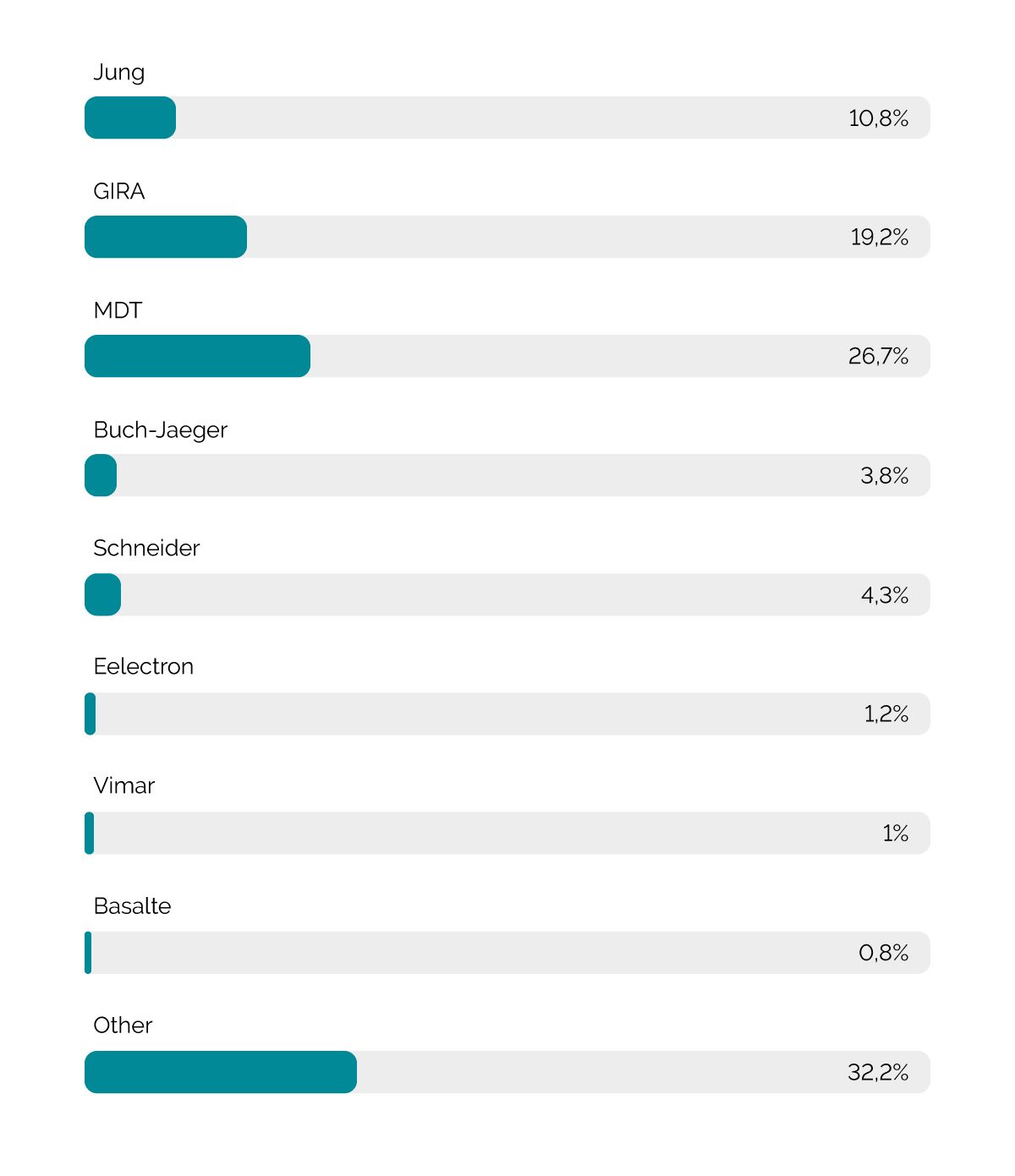
Next thing we wanted to know about different use cases. We already knew that manual controls are mostly used to control lighting and shading but what else? Scenes are by far the most popular with more than 3 quarters of users saying they have push buttons in their homes with which they control scenes. Not far behind is control of power outlets (60 %) and control of heating (54 %). What surprised us here a bit is that more than a third of the participants also control their audio systems with push buttons. This is more than we expected based on the results of our audio survey.
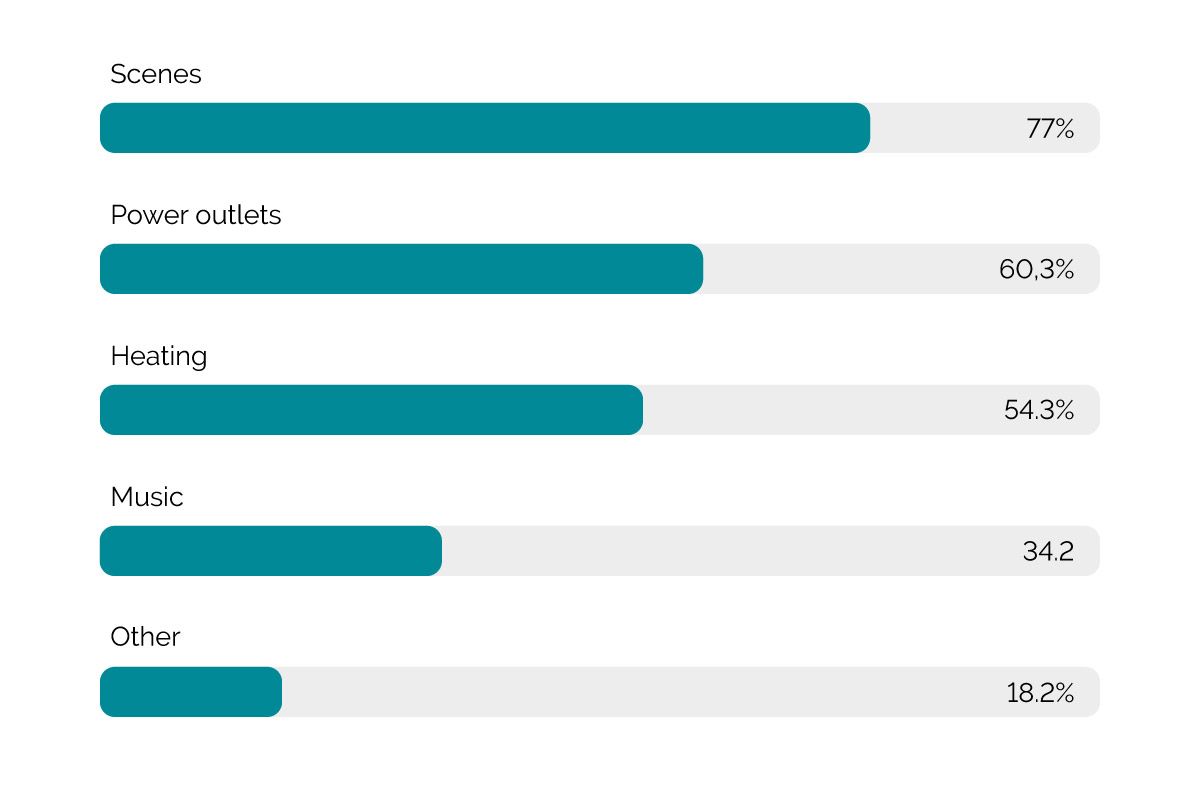
Because of a large number of devices that require manual control, we can sometimes get a large number of push buttons on the walls of our homes (although we have to say we firmly believe that if the manual controls are done right there should be less push buttons then in a home without any smart system installed). This can lead to confusion if the push buttons are not marked - this is why we wanted to know how many people have their push buttons either labeled or engraved. More than 50 % of our respondents don’t have any markings on their push buttons and the majority of them are fine with it. On the other hand if you look at all the participants that have their push buttons either labeled or engraved or don’t have either but would like to have them engraved, we also get around 50 % of participants - so in the end its’ close to 50/50.
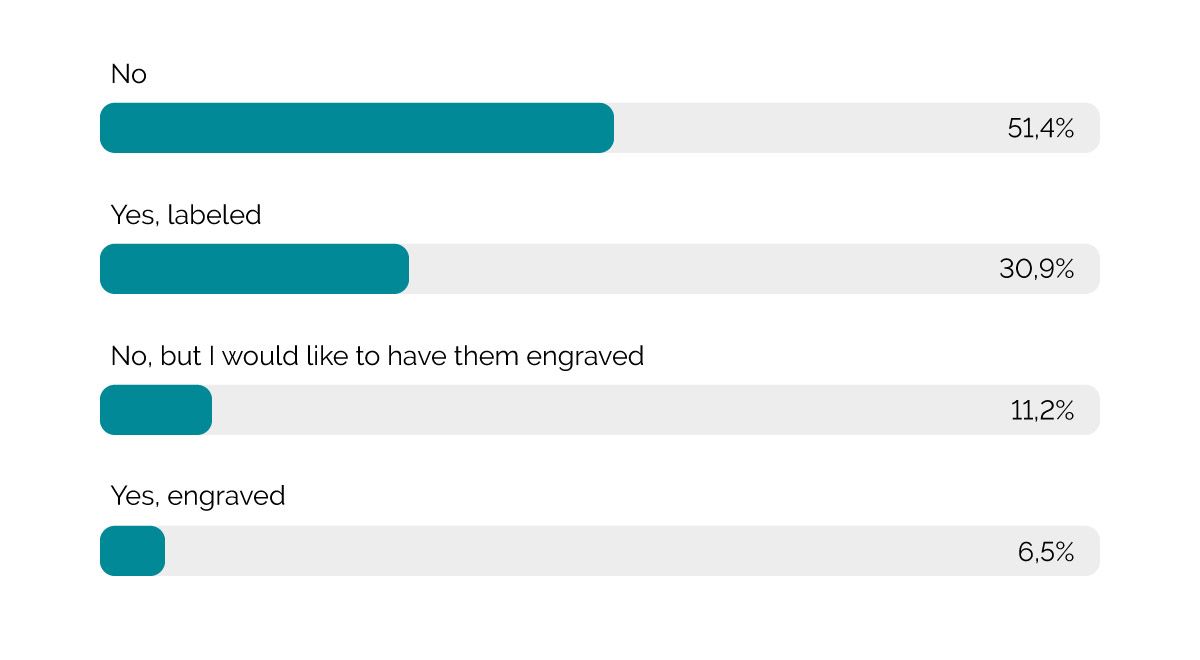
The last thing we asked our users is what was the most important factor when they were choosing their push buttons? Price is a bit important, design & advanced functions are very important and the classic look of push buttons - not so much.
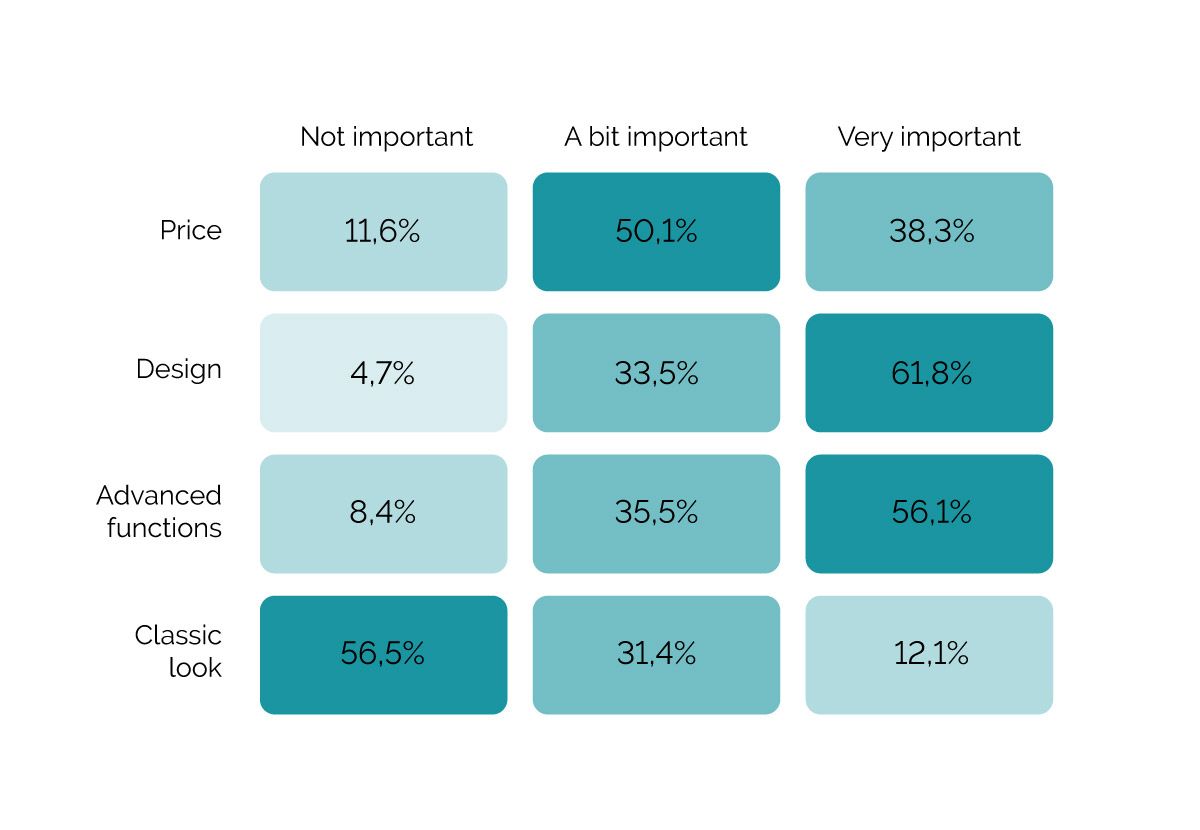
Integrator survey
As in the previous survey we also had some questions for the smart home integrators. Firstly we wanted to know how the locations and functions of push buttons are determined. Based on the answers we can see that it’s a process that the integrator does with their client - either they sit down with them and go through everything (60 %) or they propose the configuration and the clients confirm it or modify it a bit (30 %). Only a small percentage of integrators just blindly follow the electrical design project they receive. This speaks volumes about how important the placement of push buttons is to the integrators - they know that by positioning the manual controls correctly they will enable their customers to have a better smart home experience.
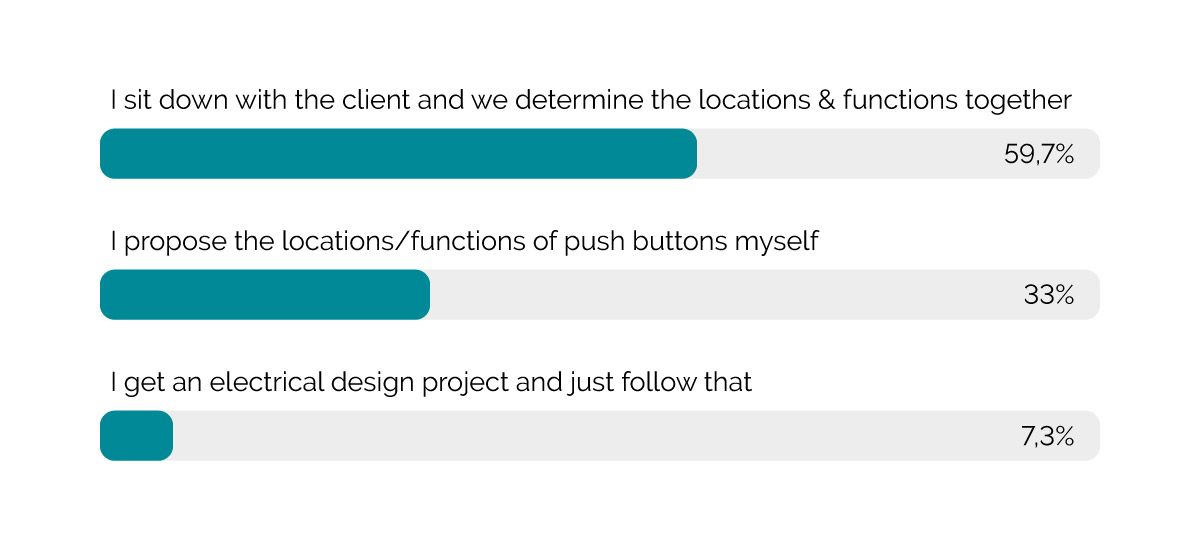
But no matter how much planning is done - users will always want something different after they live in their new smart home for a time. This is why we asked the integrators if they offer their customers the reconfiguration of the push buttons after they have lived in their homes for a while (at no additional charge). We were pleased to learn that this is mostly the case.
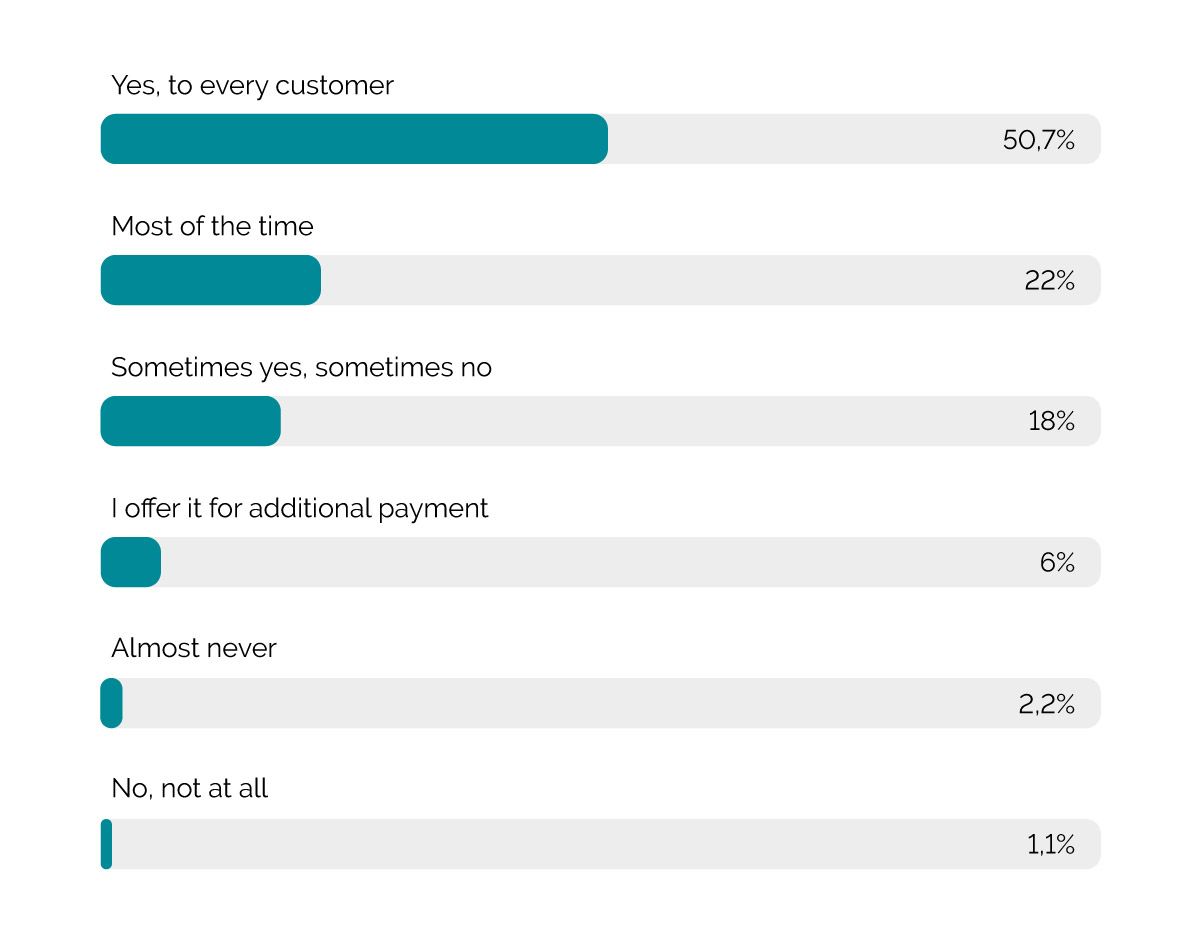
Next thing we wanted to know is if the integrators recommend having scenes push buttons and if yes - which scenes on which locations. Nice to see that almost all integrators do it, since it’s one of the basics of smart home usability. All the proposed answers are used a lot - home/away scenes at the entrance, lighting/shading scenes in the living areas and night scenes in the bedrooms. In the “Other” section there are some cinema scenes, sume shading-only scenes and a lot of Loxone integrators put Loxone moods on the client’s pushbuttons.

And do they suggest that push buttons be labeled or engraved? A lot of them do and a lot of them don’t - probably also based on what kind of push buttons they offer and how easy (or not easy) it is to label or engrave them.
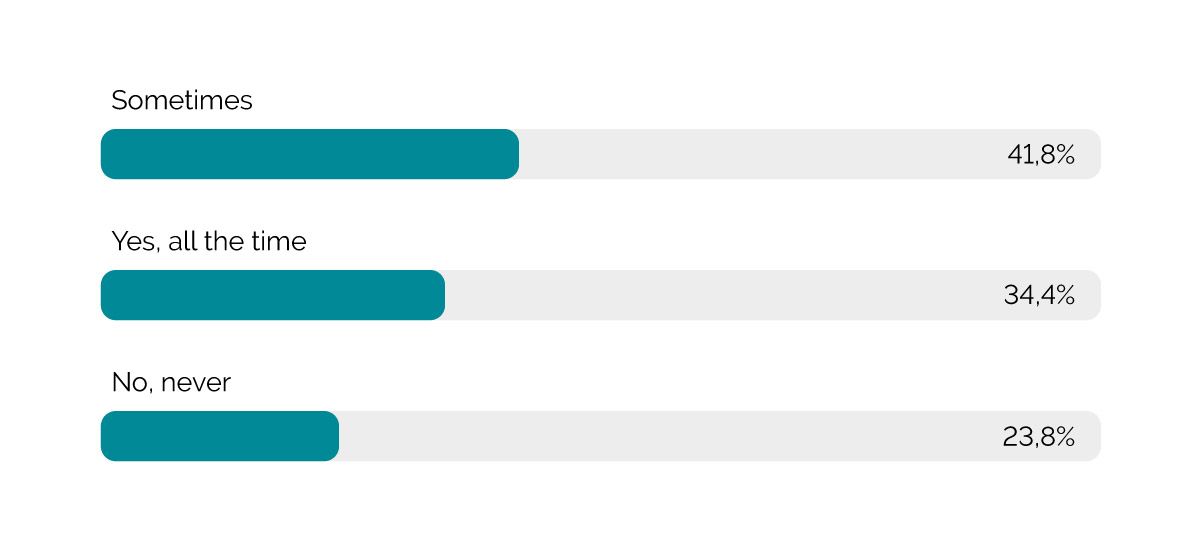
And what is the biggest pain integrators feel when installing push buttons? It’s changing the locations of the push buttons during the project. And related to the second question - a big no no for a lot of integrators is that they have to return to the project multiple times to reprogram the manual controls.
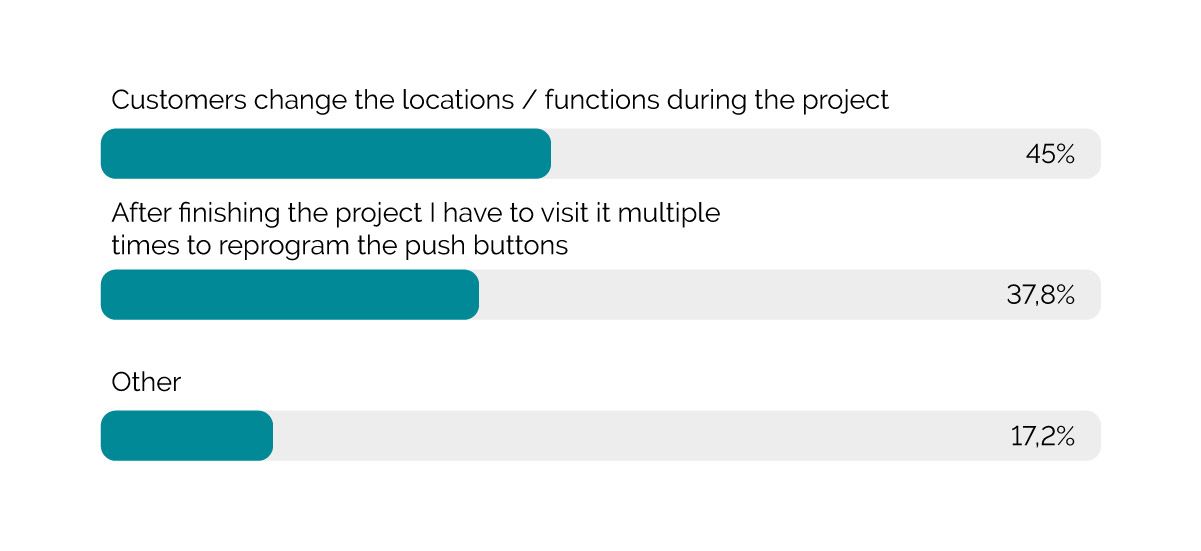
Takeaways and conclusion
The people have spoken!!! Classical push buttons are still the most popular but if it’s within your budget you should go for a design solution that nicely fits your interior. The most popular Brands are MDT, GIRA, Jung and Loxone. Also, don’t forget to reduce the number of push buttons by incorporating a lot of scene push buttons - there is a high chance that your integrator will suggest this anyway.
Try to do as much configuration and placement of the push buttons as possible at the beginning of the project. Try to do as little changes as possible during the project. Also don’t forget to ask your integrator if the reprogramming of push buttons after you have already moved into your apartment is covered in the initial price.
Follow our channels as we’ll explore other areas of smart home functionality and let you know what are the optimal choices for each of them.
